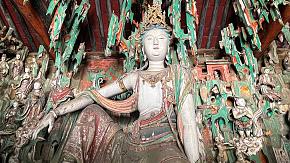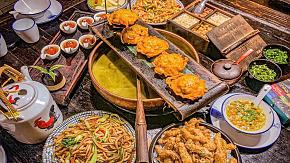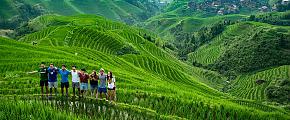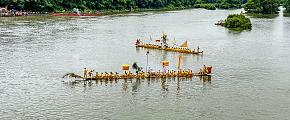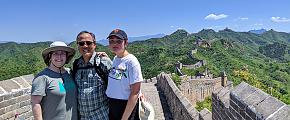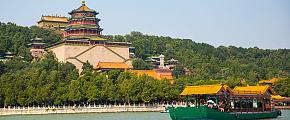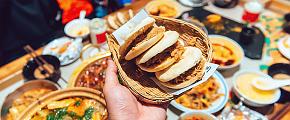The Complete Travel Guide of Forbidden City
The imperial palace, another name for the forbidden city, has been listed by UNESCO as one of the World Cultural Heritage sites in 1987. This marvelous architecture finished in 1420 from 1406 during Ming Dynasty. Because this place serves as the workplace and home for emperors. So it forbids unnecessary people from entering. That's why we called it "The Forbidden City". The palace carries the experiences of two dynasties Ming and Qing. Nowadays, here is the largest museum in China, owning about 9,000 palaces in total and millions of collections. When stepping in, you not only can see the antiques from different places in China but also can appreciate the majestic buildings with sophisticated and advanced architectural skills in ancient times. If you're planning a trip to China and are interested in the profound history of China, this palace is on your must-see attractions list!
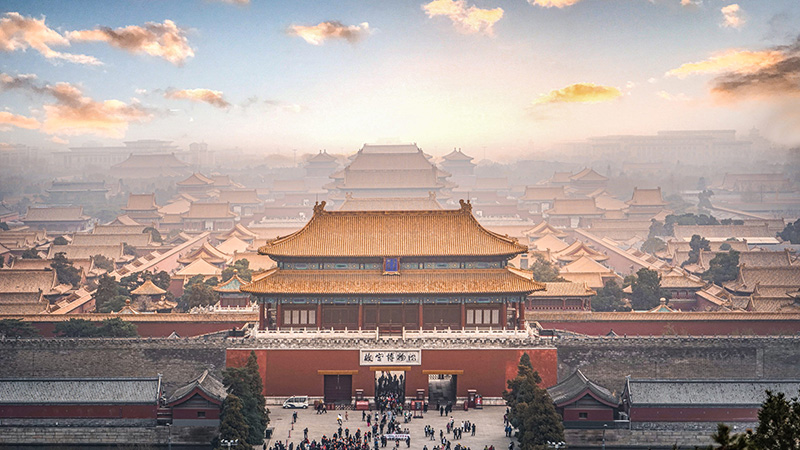 Overlook the Forbidden City from Jingshan Park
Overlook the Forbidden City from Jingshan Park
The Layout of the Forbidden City
The length and width of the forbidden city are 961 and 753m, which is surrounded by a 52m moat and protected by 10m ramparts. This palace was divided into two parts(the outer and inner court) according to the layout and function.
What You Can See Inside the Forbidden City
Outer Three Halls
Enter from the Meridian Gate and go straight about 0.4km. Then passing the golden water bridge and through the peaceful gate to step into the outer court, you will see one of the outer three halls - the Hall of Supreme Harmony. It is the largest hall in the palace which is 2377 square meters in total, 35.05m high with its base(8.13m). The internal also has a luxury decor, with golden brick paving its ground, and a dragon stays in the sunk panel. In the past, emperors held grand ceremonies in the Hall of Supreme Harmony, such as the emperor's inauguration, wedding, and choosing a general to fight wars. The hall behind the palace is the Hall of Central Harmony and the Hall of Preserving Harmony. Those two halls have a similar design but serve different functions for emperors resting and changing clothes.
Inner Three Court
The inner three palaces are the Palace of Heavenly Purity, the Hall of Union, and Earthly Tranquility. When you go through the door and connect to the inner court, the first building shown in front of you is the palace of heavenly purity. This palace is the largest in the inner court, occupied by 1400 square meters. As the bedroom of Ming Dynasty emperors, it is designed into two floors with nine rooms for concubines to sleep and also for the emperor's security since it is hard for assassins to figure out where the emperor stays. And queens in the past lived in the Palace of Earthly Tranquility behind it. There are surrounded by the Western Six Palaces and Eastern Six Palaces, where live concubines of emperors.
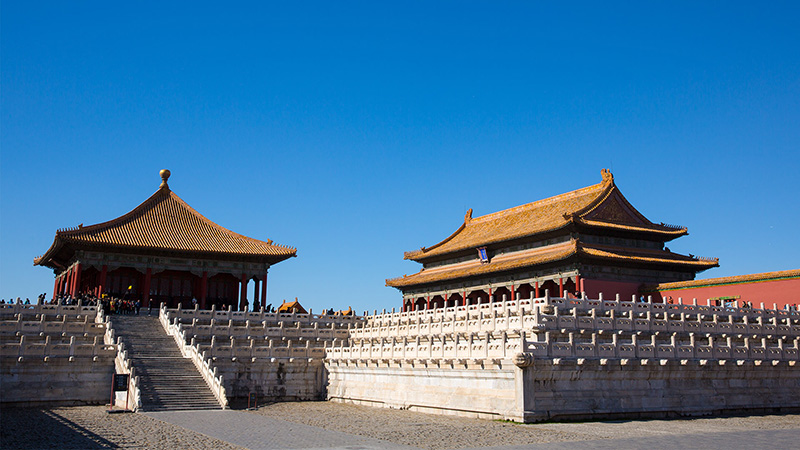 Forbidden City
Forbidden City
The Imperial Garden
As people continue to walk along the axis and through the Earthly Tranquility Gate, they will come into a garden called the Imperial Garden. The most important function of this beautiful garden is to relax busy emperors in their leisure time and also for their families to enjoy. The whole garden is a rectangle which is about 1.2 square meters(almost 1.7 football venue of the world cup). inside there are some ancient trees whose age is over 100 years, strange stones in various shapes, and elegant pavilions in different kinds of styles. as one of them is famous for pots of precious begonia with blood-like red during its flourishing time. Called Mi Xue Pavilion. A place for the English teacher of the last emperor to have a rest. Whenever you go, this place always values for viewing. The passages are paved with colorful cobbles to form over 900 pictures of people, flowers, natural scopes, Beijing operate characters, and legend stories.
The Gallery of Clocks (at the Hall for Ancestral Worship)
In this gallery, collections are divided into 5 different parts to exhibit. Each part exhibits distinguished clocks from various periods and nations to show the development of clocks. Some of the collections come from the UK, France, and others are made in China.
The Furniture Gallery (at South Storehouses)
Most of its furniture was made in Qing Dynasty. there are arranged in different functioning areas such as study rooms, courtyards and others to serve various usages. As this place combined with modern lights and multimedia technologies, it allows visitors if felt a real place in that period.
The Sculpture Gallery (at Palace of Benevolent Tranquility)
If someone mentioned sculptures in China, most people will appear a thought of the terracotta Army. However, which is only a branch in the whole Chinese sculpture history. This exhibition hall includes five parts: Supreme Sculpture, Han and Tang Terracotta Figures, Stone and Brick Reliefs, Xiude White Stone, and Buddhist Statues. In this gallery, you will see vivid sculptures from different regions in China, including the world-renowned Terracotta Warrior from Xi and the white stone Buddhist statues from Hebei Province.
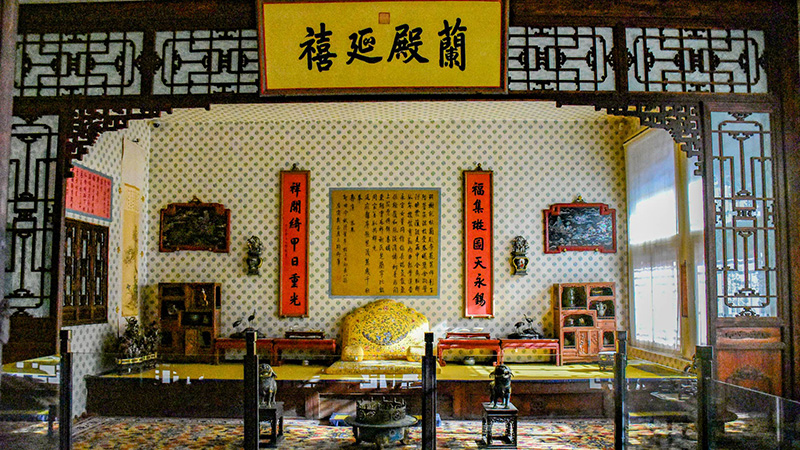 Shoukang Palace-Palace of Longevity and Good Health
Shoukang Palace-Palace of Longevity and Good Health
The Treasure Gallery (at The Palace of Tranquil Longevity)
As it is called The Treasure Gallery, most collections are only used by influential people. There are exquisite items made of precious materials, such as jade, jadeite, gold, silver, pearls, and other precious and semi-precious stones to be displayed in 6 units. And an additional ticket (10 yuan/person) is required for admission to this area
The Bronze Gallery (at The Palace of Celestial Favor)
China has long been known to make and use bronze tools from the Xia period. The bronze tools demonstrated the important functions in ancient Chinese society such as farming tools, weapons, wine vessels and ceremonial tools. Some of them are carved with inscriptions which are especially rare. In the palace, the museum collects more than 15,000 pieces of bronze artefacts. And only 1,600 collections of them have inscriptions from the pre-Qin dynasty(the first dynasty in Chinese history)
Gallery of Painting and Calligraphy (at The Hall of Literary Brilliance)
Since ancient china, people are advocating the thought of ethics. Such play music, playing chess, calligraphy and painting are symbols of the highbrow lifestyle. This gallery highlighted the calligraphy and painting. Chinese scripts are divided into five main styles of Chinese calligraphy such as the Seal script, the clerical script, the cursive script, the regular script and the semi-cursive script. And Chinese ink painting describes various content including landscape painting and flower-and-plant painting. They are like a living history book showing the lives and thoughts of people throughout the ages. If you would visit these galleries, here are some route recommendations following: The Treasure Gallery - The Gallery of Clocks - The Sculpture Gallery - The Furniture Gallery - Gallery of Painting and Calligraphy.
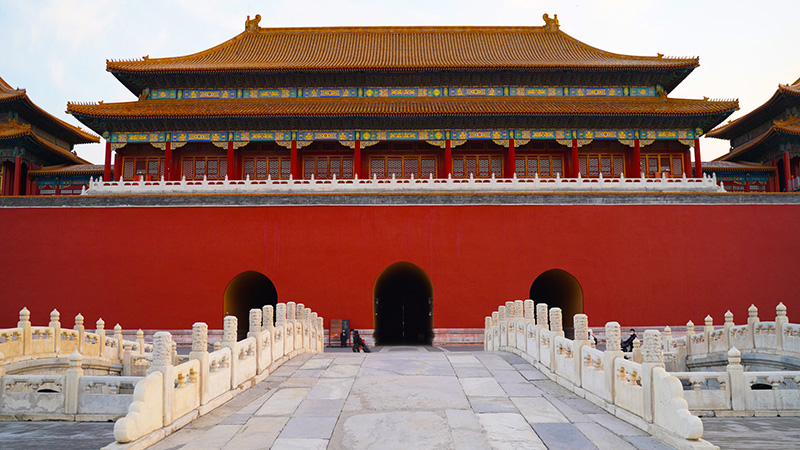 Meridian Gate
Meridian Gate
Recommendations and Suggestions about Photographing
When the museum is near its close time, the light of dusk is giving good texture, also it will the number of visitors will gradually reduce. For these two reasons, it is a good opportunity to shoot majestic halls as if in that period. If you are a professional photographer pursuing powerful images, you must have a look at these places: the bridge and the steps in front of the Concorde, where to hold the mobile phone in a high position to shoot the big scene, and then at the Yong Alley, where is a narrow passage between two red walls. it appears in many media works and here is become one of the popular places for taking photos. Let your photographer hold you in a lower position and capture you standing in this seemingly endless passage, it creates a gentle sad feeling. Don't always stick on the axis. Go to both sides of the palace museum, because there are fewer people. Remember to capture in different positions, otherwise, other visitors appearing in your shot will break your photo structures and make it less attractive. Then, buildings such as Palace Museum are more suitable for a square front angle, because they show an aesthetic sense of symmetry. If You are not good at choosing shot spots, you can follow professional teams to copy their ideas. Don't forget to take some architectural photos which will add more sense to your albums.
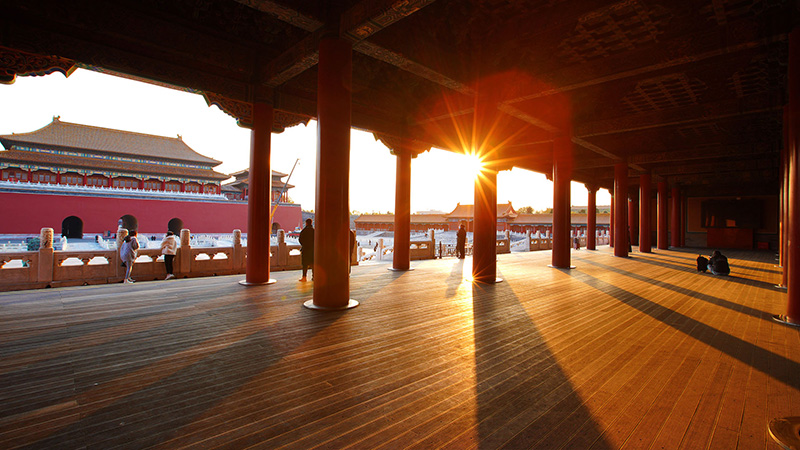 Dusk Light of Forbidden City
Dusk Light of Forbidden City
Palace Museum Restaurant
As the forbidden city is a large resort, there are some food stations set in there for visitors to recover energy. Ice Cellar Restaurant, which is near the Hall of Benevolent Peace, is a place for ice cream and simple cuisine. Palace Museum Restaurant is next to the Palace of Earthly Tranquility, providing Chinese fast food. And Wan Chun Jinfu Low Tea: Next to the Palace of Earthly Tranquility, serves Chinese tea.
Nowadays, with numerous visitors enter into this mysterious palace which belonged to emperors exclusively. All of the secrets and memories of it are gradually revealed to people. Every piece of brick, each wisp of wind, every piece of tile and every single tree here are there to tell their profound stories. It is a meaningful place for everyone to broaden horizon. Even if you are not a native, the Forbidden City will satisfy all of your imaginations for China and leave a great impression in your mind!
Quick Question
What Our Clients Say
Explore the latest verified reviews of Odynovo's travel services on Tripadvisor, Google, Trustpilot, Product Review and more trusted platforms.
SUBSCRIBE TO WIN A FREE TOUR
Subscribe to our newsletter for a chance to win a free 7-day tour to India! And more insider travel news, exclusive offers, and inspiration will be sent straight to your inbox. Check our previous newsletters and get some sparks.

